Most plant-based cat litter can be composted and it is a simple, environmentally-friendly way of disposing of cat litter.
Contents
Types Of Cat Litter Than Can Be Composted
Biodegradable cat litter such as:
- wood pellets
- paper litter
- walnut-shell litter
- corn-based litter
…and other plant-based cat litter can be composted as long as they do not have chemical additives, silica, or clay ingredients.
Clay and silica-based cat litter cannot be composted because they are not biodegradable. These cat litter types need to be disposed of in the household waste bin and will end up in landfill.
Certain types of clumping litter can be composted as long as it is plant-based, biodegradable and does not contain silica or clay.
Always check the packaging if you are unsure, many brands will make it clear whether or not the litter is biodegradable and compostable.
Dangers Of Composting Cat Litter & Things To Be Aware Of
One of the risks of composting cat litter is that cat faeces can contain a number of parasites and pathogens including Toxoplasma gondii (one of the main reasons why dumping cat litter is illegal).
The compost does not reach a high enough temperature to kill these harmful pathogens and parasites which increases the risk of being exposed to it, particularly for pregnant women and people with compromised immune systems.
When done correctly, there is very little risk involved with composting cat litter.
Follow these tips to ensure your compost pile is as safe and effective as possible:
- Don’t place compost that contains cat waste on or around edible plants and vegetable patches
- Have a separate compost for use in vegetable patches and on edible plants. Keep these compost piles 20 feet away from each other to avoid cross-contamination.
- Place barriers around the compost heap to avoid children and animals (pets and wildlife) accessing the pile.
- Wash your hands thoroughly after handling cat litter and compost.
- Do not compost cat litter if you are pregnant or immunocompromised.
- It’s recommended you leave the cat litter to compost for at least a year to give time for the pathogens to be killed properly (a standard compost heap only needs around 6 months so cat litter compost heaps require more time before the compost is ready to use).
7 Simple Steps To Compost Your Cat Litter:
1. Create A Compost Pile
To start composting cat litter, you first need a suitable area to start the compost pile.
This needs to be outdoors and the area should have plenty of space so the pile can be positioned away from buildings, fences, and water sources.
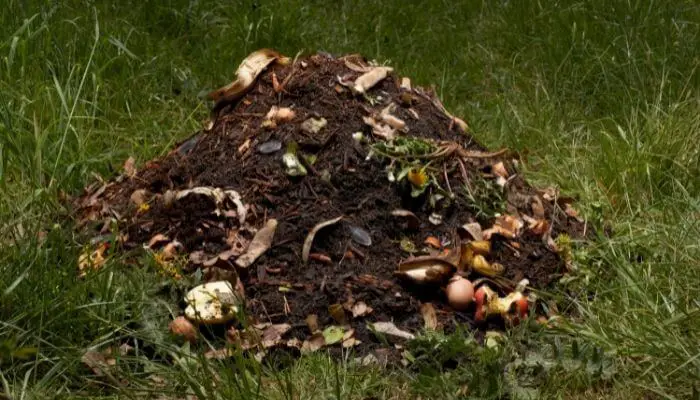
It is worth checking if your city or state has rules and regulations regarding composting before you get started.
To make things easier, you may want to use a compost bin to create the compost with minimal mess and fuss. This compost bin is designed specifically for pet poo, it is pedal-operated making it easy to set up and use.
2. Start Layering
For a compost heap to work it needs to have layers of nitrogen and carbon sources.
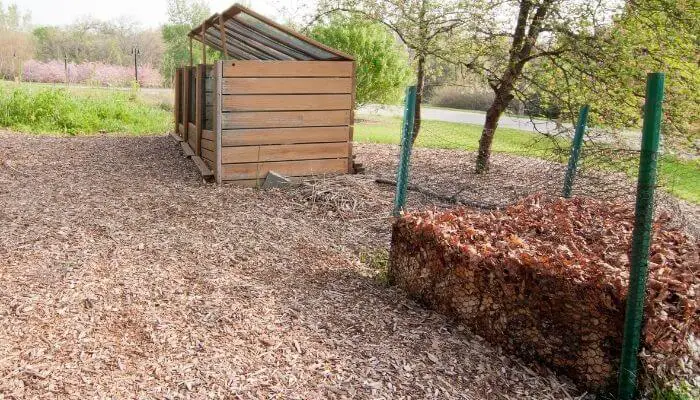
Nitrogen sources are green materials such as grass and leaves while carbon sources are branches, eggshells and dried leaves.
The compost needs a balance of these two source types for it to break down organic waste and create nutrient-rich usable compost.
3. Add Cat Litter
Once you have got the basic compost started you can begin to add the cat litter.

It is best to remove cat faeces from the litter and dispose of this in the general waste bin to avoid bacteria and contamination issues.
Add the litter to the centre of the compost pile and then cover it with a layer of carbon matter (straw, branches, dried leaves etc.).
4. Continue To Add To The Compost Pile
Now you have started your compost pile, you need to continue to add carbon-rich and nitrogen-rich sources.
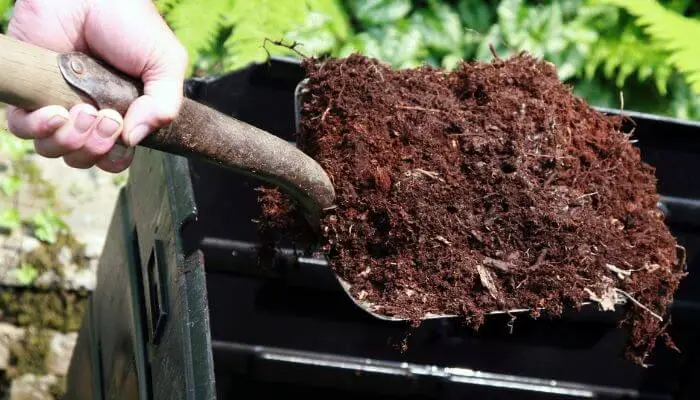
It may be best to stockpile materials and add them in layers once you have enough of each. Whenever you add a layer of green material, always top it off with a layer of carbon sources (brown material) to help keep the compost pile well balanced.
5. Ensure The Compost Pile Remains Moist
Moisture is a key component of the composting process.
The compost pile needs to be moist but not wet, not enough moisture will slow or stop the composting process while too much will cause anaerobic conditions.
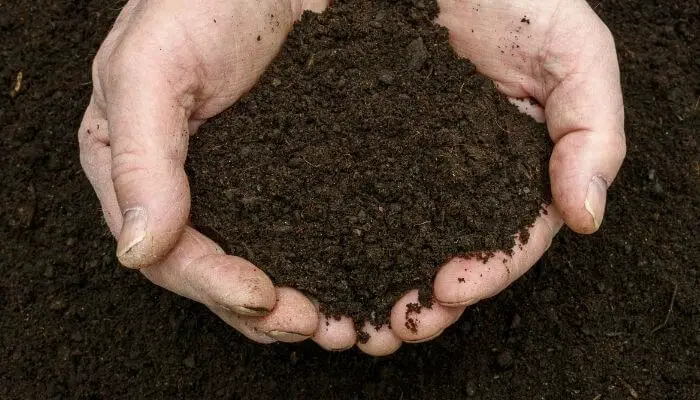
There are moisture meters available that can help you monitor the moisture of your compost pile but these are generally not necessary.
Just ensure the compost pile remains moist at all times.
6. Maintain Oxygen Circulation
In addition to moisture, a compost heap needs to have sufficient air movement to allow it to break down.

Every few weeks, aerate the compost pile by turning the compost pile with a fork or shovel.
This doesn’t need to be done often as there is a risk of overdoing it.
7. Use The Compost
Typically, compost containing cat waste is ready to use after around 12 – 18 months.
The compost should be dark, rich and crumbly.
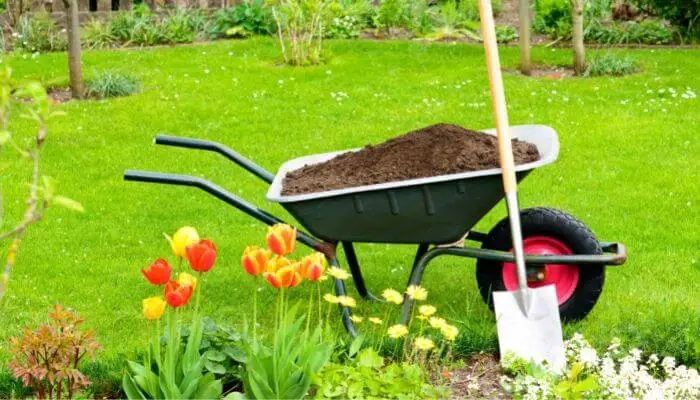
All of the materials originally placed in the compost should have fully broken down leaving you with what looks like soil.
Composting Cat Litter With Worms
Worms can be a huge help with the composting process but they are highly sensitive to ammonia and inorganic salts – both of which are found in urine.
To make urine-soaked cat litter more worm-friendly you can:
- Mix the urine soaked litter with lots of carbon-rich material before adding it to the compost.
- Leave this mix outside for several days before adding it to your compost pile, this time gives the urine a chance to break down and makes the litter more worm-friendly.
- Soak the material with water before adding it to the compost if you want to speed up the process. When you soak the material make sure you do it away from vegetation and local bodies of water.
When the urine waste material no longer has an ammonia smell it can be added to the compost pile.
As you’ve taken steps to ensure the litter is worm-friendly, it won’t negatively impact the worms and the compost will continue to break down as it should.
The Benefits Of Composting Cat Litter
Composting cat litter is the most environmentally friendly way of disposing of it.
By choosing to compost the litter you help to reduce how much waste goes to landfill while also creating rich compost for use in the garden.
Can Cat Litter Go In The Green Bin?
Cat litter cannot go into the green waste bin in the UK.
When it comes to pet waste, you can put hay and straw bedding as well as litter from vegetarian pets such as hamsters, rabbits, and guinea pigs into the green bin but you cannot put other pet litter into these bins.
Cat litter can go into the green waste bin in some areas of the US and Canada.
It is best to check with local regulations to see how your county or state is able to handle cat litter waste.
In some states, such as Nova Scotia in Canada, cat owners are encouraged to put cat litter into the green bin but it remains optional and can be placed into the garbage if preferred.
It is also important to note that plastic cannot be put into green bins so the cat litter should not be put into plastic bags, it should be placed directly into the bins.

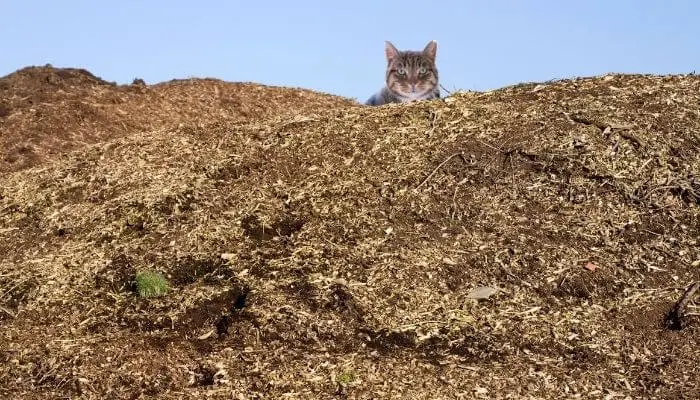

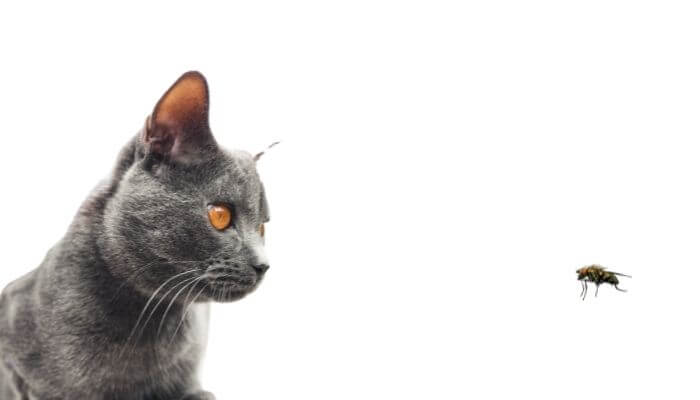




Leave a Comment